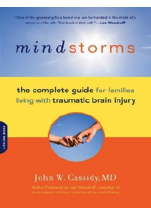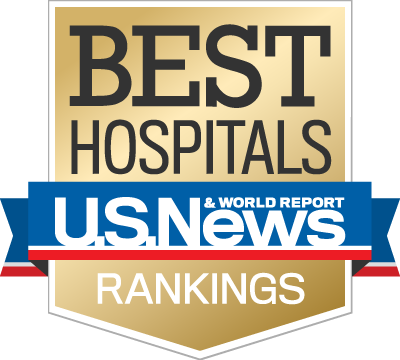
Websites with information for all persons with Acute Neurological Injuries (ANI)
1) National Institutes of Health (www.nih.gov) and ClinicalTrials.gov (www.ClinicalTrials.gov). These U.S. government websites are among the two most important resources that individuals with ANI should learn how to use, since their information is trustworthy and current. The NIH is the umbrella organization for more than 20 institutes and centers that are dedicated to biomedical research. ClinicalTrials.gov is a registry that contains a database of publicly and privately supported clinical studies of human participants conducted around the world. For example, I wanted to know what clinical trials for SCI were available to me. I searched the ClinicalTrials.gov website where I found 154 studies that matched these criteria: actively recruiting, “Spinal Cord Injuries”, in the United States, studies with male participants, adults (18-65). You can access each trial to determine which ones are of interest to you and whether you qualify for those trials. You can also create an update based on your search for new trials that fit your criteria. The NIH has several organizations that provide information on SCI, stroke and TBI. These include the National Heart Lung and Blood Institute (NHLBI, www.nhlbi.nih.gov), the National Institute on Disability, Independent Living, and Rehabilitation Research (NIDILRR, www.acl.gov), the National Institute of Mental Health (NIMH, www.nimh.nih.gov), the National Institute for Neurologic Disorders and Stroke (NINDS, www.ninds.nih.gov), and the National Center for Complementary and Integrative Health (NCCIH, https://nccih.nih.gov). NHLBI and NINDS have enormous resources for patients and providers, but the NHLBI website is much easier to navigate. Both contain links to ClinicalTrials.gov. SCI information is available only through the NINDS website. Both websites offer comprehensive information about ANIs, but are tailored more for healthcare professionals than lay persons. To navigate at the homepage click on “disorders” and type “spinal cord injury,” “stroke” or “traumatic brain injury”. This will then bring you to an information page that provides these additional resources: definition, treatment, prognosis, clinical trials, organizations, and publications. Each of these then contains multiple additional resources. The website has much comprehensive information but it requires sophistication to navigate. NIDILRR focuses on helping people with disabilities and older adults to live at home with the supports they need, participating in communities that value their contributions. The functional unit of NIDILRR is the Administration for Community Living (ACL). The primary role is to provide money for research related to devices and therapies that improve independent function. However, the Model Systems Program is very useful because it provides coordinated systems of rehabilitation care for SCI, TBI, and stroke among other disabilities. The model systems set standards by which a person with ANI can assess the quality of programs available in their geographic area. NIMH (www.nimh.nih.gov) provides excellent discussion of psychological issues including anxiety, PTSD, and depression along with current clinical trials in these areas. NCCIH is primarily a research organization but it does provide good descriptions of all major complimentary and alternative therapies as well as descriptions of ongoing clinical trials in these areas.
2) Centers for Disease Control and Prevention (CDC). (https://www.cdc.gov/). This site provides basic information on all ANI. It answers questions related to epidemiology of ANI such as what is the definition of a mild TBI vs. moderate TBI, vs. severe TBI; how many of each type occur each year in United States; how many people are living with them; and where do they live (home, assisted care, long term care hospital).
3) UpToDate (http://www.uptodate.com/home/patient-information). Written by physicians for both healthcare providers and patients, this is a living encyclopedia of medical knowledge. The articles are updated at least once each year and provide useful lists of references and resources to support treatment recommendations. Pertinent to lay persons are “The Basics;” articles one to three pages long written according to the principles of plain language. They answer the four or five most important questions a person might have about a medical problem and are perfect for readers who want a general overview. These articles are available only to UpToDate subscribers, which means that your healthcare provider must print this out for you. In contrast, “Beyond the Basics” are articles five to ten pages long, more detailed and technical than The Basics; but are available to everyone, free of charge.
4) U.S. Department of Veterans Affairs: Rehabilitation Research and Development Service (https://www.research.va.gov). The site contains information and a journal on rehabilitation issues for veterans, but is applicable to all groups. This is by far the best website for information on TBI. There is a 14 page description of broad topics on TBI with many resources and research publications referenced in each topic. Many of these are at the level of lay persons. In contrast to TBI, there are limited resources on SCI, which are difficult to find and not very comprehensive. There are even fewer on stroke. However, there are many on PTSD, which is a major problem for all persons with ANI. Overall, this is a worthwhile website to explore, especially for TBI.
5) Mayo Clinic (http://www.mayoclinic.org) has many useful disease specific topics that provide broad overviews.
6) Wikipedia (https://en.wikipedia.org) has extensive articles on ANI with many references. However, the quality is uneven and it has no information on clinical trials nor discussion of the pro’s and con’s of different treatments.
Websites with information for all persons with Spinal Cord Injuries (SCI)
1) Paralyzed Veterans of America (PVA) (http://www.pva.org). PVA is a congressionally chartered veterans service organization founded in 1946 that provides expertise to veterans of the armed forces who have experienced SCI. Its website has a wealth of useful material. For example, there are 11 clinical practice guidelines for healthcare providers, which are superb articles on topics such as “Sexuality and Reproductive Health”, “Bladder Management”, and “Pressure Ulcer Prevention and Treatment”. For veterans and other lay persons there are 15 articles for similar topics under consumer guides, as well as sections on adaptive sports, research, advocacy, and education.
2) Miami Project (http://www.themiamiproject.org). The Miami Project was founded in 1985 by Barth A. Green, M.D. and NFL Hall of Fame linebacker Nick Buoniconti to cure paralysis after SCI by supporting research. Since then, it has expanded its focus from SCI to include TBI. Its current clinical trials include transplantation of one’s own nerve support cells (Schwann), use of cooling to prevent damage (therapeutic hypothermia), deep brain stimulation to enhance healing, and brain machine interface technologies. There are very limited resources for information regarding SCI treatment.
3) The Reeve Foundation (https://www.christopherreeve.org) is dedicated to curing SCI by funding innovative research, and improving the quality of life for people living with paralysis through grants, information and advocacy. The website is an amazing source of confusion. If you want access to fact sheets on literally hundreds of topics ranging from advocacy to complications of paralysis, you have to navigate through the following pathways: living with paralysis to health to secondary conditions to topics such as bladder management to the bottom of this section where it says “check out our repository of fact sheets” where there is an alphabetical list of complications rather than searchable contents. The documents here are extremely brief summaries followed by many pages of other websites that one must navigate without any indication of their relative benefits. The advice of the Reeve Foundation regarding stem cell trials is excellent; so it is a highly useful website for clinical trials information, but not for self-help.
4) United Spinal Association. (https://www.unitedspinal.org). United Spinal Association is dedicated to enhancing the quality of life of all people living with spinal cord injuries and disorders (SCI/D), including multiple sclerosis, spina bifida and others. This is one of the best websites for self-help. It contains many videos, as well as covering all aspects of medical, psychological, assistive, financial, social, recreational, and travel issues that are faced by SCI/D individuals and their families.
Websites with information for all persons who have had a Stroke
1) American Stroke Association and American Heart Association are linked together (http://www.strokeassociation.org). This website is by far the best one for self-help. It contains informative PDFs for persons and families labeled as Lets-Talk-About-Stroke-Patient-Information-Sheets.
2) Other stroke websites. Sadly, given how common stroke is, the resources on the Web are very limited and I can only recommend the site above.
Websites with information for all persons who have had a Traumatic Brain Injury
1) U.S. Department of Veterans Affairs: Rehabilitation Research and Development Service (https://www.research.va.gov) is the best website as described above.
2) The Brain Injury Association of America (http://www.traumaticbraininjury.com) and its state affiliates strive to connect people with useful, accurate information and resources in their area. It is unfortunately out of date and not very useful.
Books for ANI Patients
Mayo clinic guide to living with a spinal cord injury: Moving Ahead with Your Life, Mayo Clinic; 200 pages; Demos Health.
Spinal cord injury: A Guide for Living Second Edition, by Sara Palmer PhD, Kay Harris Kriegsman PhD & Jeffrey B. Palmer MD; 376 pages; John Hopkins University Press.
Life on wheels: The A to Z Guide to Living Fully with Mobility Issues, Second Edition, by Gary Karp; 477 pages; Demos Health.
My stroke of insight: A Brain Scientist’s Personal Journey, by Jill Bolte Taylor, Ph.D.; 192 pages; Viking.
Hope heals: A True Story of Overwhelming Loss and an Overcoming Love, by Katherine & Jay Wolf; 256 pages; Zondervan.
Stronger after stroke: Your Roadmap to Recovery, by Peter G. Levine; 296 pages; Demos Health.
Never give up: My Stroke, My Recovery & My Return to the NFL, by Tedy Bruschi; 288 pages; Wiley.
Over my head: A Doctor’s Own Story of Head Injury from the Inside Looking Out, by Claudia L. Osborn; 239 pages; Andrews McMeel Publishing.
Mindstorms: The Complete Guide for Families Living with Traumatic Brain Injury, by John W. Cassidy; 256 pages; Da Capo Lifelong Books.
The brain that changes itself: Stories of Personal Triumph from the Frontiers of Brain Science, by Norman Doidge, MD; 448 pages; Viking.
The brain’s way of healing: Remarkable Discoveries and Recoveries from the Frontiers of Neuroplasticity, by Norman Doidge, MD; 409 pages; Viking.
- Shirley Ryan AbilityLab (formerly Rehabilitation Institute of Chicago), Chicago, IL
- Spaulding Rehabilitation Hospital, Massachusetts General Hospital, Boston, MA
- TIRR Memorial Hermann – Houston, TX
- Kessler Institute for Rehabilitation – West Orange, NJ
- University of Washington Medical Center – Seattle WA
- Mayo Clinic – Rochester, MN
- Rusk Rehabilitation at NYU Langone Hospitals – New York, NY
- Craig Hospital, Englewood, CO
- Shepherd Center, Atlanta, GA
- Moss Rehab, Elkins Park, PA












